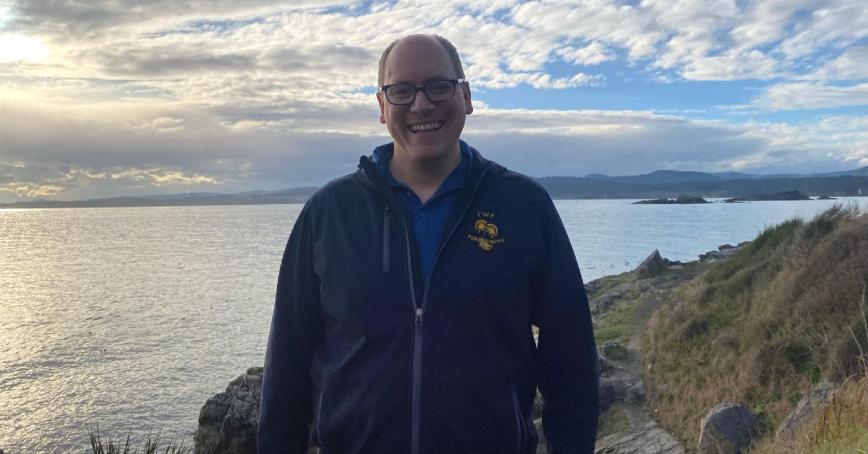Building climate resilient solutions in middle schools
Topics
Featured
Share online

Andrew Delong, a Master of Arts in Environmental Education and Communication alum, is creating pathways for climate resilient solutions at Royal Oak Middle School.
Delong moved to Victoria with his family six years ago and teaches grade seven at Royal Oak. He found out about Royal Roads in 2008 through a colleague who had been doing a different program. “When we moved to Victoria, it sort of became more of a possibility,” Delong says.
"I really enjoyed the appeal of the Royal Roads blended program, and how it allowed students flexibility of life, school and work...it was during the pandemic when my family and I realized we were likely not going to be doing any major travelling for a couple of years, and decided why not run and jump into doing a masters?
“I have always been interested in being connected with the environment and I know that there's a lot of teaching around that,” Delong continues. “I decided on this program because I really liked the angle of a Master of Arts that's focusing on the environment, education and communication.”
Delong says some of the takeaways from the MAEEC program for him includes ways to help connect his students to nature, and also building different partnerships and opportunities.
“After I was wrapping up my course, I had an opportunity to work with the school district, and they're trying to have climate resilient projects in each of our different schools…so I'm working with the district to do a project at Royal Oak Middle School," he says.
As part of his major research project for his studies, Delong ran a makerspaces for his school. The makerspaces was designed to help create conversation and solutions and build a more climate resilient design for the school. Students, administration, and some school district management members came together on a Pro-D day to contribute. As a group, they learned about design frameworks and design thinking.
“Makerspaces are designed around empathetic interviews and empathetic listening,” Delong explains. “Participants were placed in teams with a variety of teaching staff, adults, and students in each group. They began by interviewing each other about what was important to them, both about the environment and about the school.
“We did a school tour, so they actually got to go walk around the outside so that they could…have a sense of place and sense of opportunity of what can be created.”
Next steps included more interviews followed by finalizing ideas in pairs, and then, in teams. After that, the finalized ideas were built with everyday objects – paper bags, paper cups, elastic bands, plastic bags, etc.
The ideas from the makerspace inspired real change.
Building off one of the ideas from the session, Delong teamed up with one of his RRU classmates, also a fellow teacher, to begin creating a safe outdoor learning space in the forest at Royal Oak Middle School, for the students to play and learn in.
“It was a powerful thing to have students say that…they're feeling really empowered by the experience,” Delong concludes.